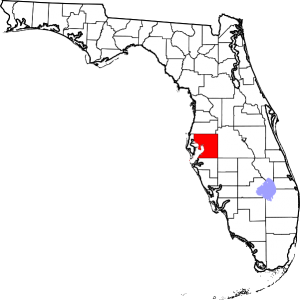A third person from Hillsborough County, FL has died as a result of an infection with the bacterial pathogen, Vibrio vulnificus, according to state health officials.
This bring the death toll due to vibriosis caused by V. vulnificus to 11. There has been 24 cases, fatal and non-fatal, reported to date in 2015.

Image/David Benbennick
The two fatalities reported earlier this year were in people from Gibsonton and Lutz, both outside of Tampa.
In 2014, Hillsborough County reported three cases all year from Dover, Plant City and Tampa. Non of the reported cases last year resulted in death.
In 2014, Florida reported 32 cases of V. vulnificus with 7 deaths.
Vibrio vulnificus is a bacterium that is found in all coastal waters of the United States. It has also been found in brackish waters of some interior states. It may be normal flora in salt water and acquiring this organism from shellfish or water exposure does not imply that the water is contaminated by sewage. Most infections that happen are attributed to consuming raw oysters harvested in the Gulf of Mexico during the summer. Because the oysters are shipped all over the country, infections are not limited to the Gulf States.
Oysters are sedentary bivalve mollusks that feed by filtering plankton (small plants and animals) from estuarine water. Because Vibrio vulnificus occurs naturally in the same waters that oysters feed, the bacteria is ingested and becomes assimilated and concentrated in the animal’s tissues.
Healthy, non at-risk individuals are not at risk for serious infection. Non at-risk patients with gastroenteritis have a relatively mild illness consisting of vomiting, diarrhea and abdominal cramps and rarely requirehospitalization.
However, there are certain medical conditions that can put you at risk for very rapid, serious and possibly deadly disease. Individuals with diabetes, liver disease like cirrhosis, leukemia, AIDS or those who take immunosuppressive drugs or steroids are particularly susceptible to primary septicemia, a serious “blood poisoning”. In these individuals the bacteria gets into the bloodstream resulting in septic shock and death in more than 50% of those infected.
Wound infections are another problem with Vibrio vulnificus. These infections result either from contaminating an open wound with sea water harboring the organism, or by lacerating part of the body on coral, fish, etc., followed by contamination with the organism.
This infection can be diagnosed by isolating the organism in stool, wound or blood cultures. It can be treated with a antibiotic regimen and supportive care.
What can you do to prevent this infection? Patients with chronic liver disease or immunocompromisingconditions are particularly vulnerable to infection and are advised to avoid raw or undercooked seafood. Persons with open wounds should avoid contact with warm seawater.
Robert Herriman is a microbiologist and the Editor-in-Chief of Outbreak News Today
Follow @bactiman63
Related:


One thought on “Florida: Vibrio vulnificus takes the life of a 3rd individual from Hillsborough County”